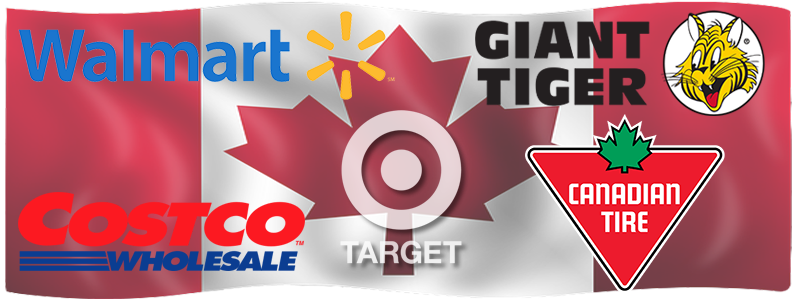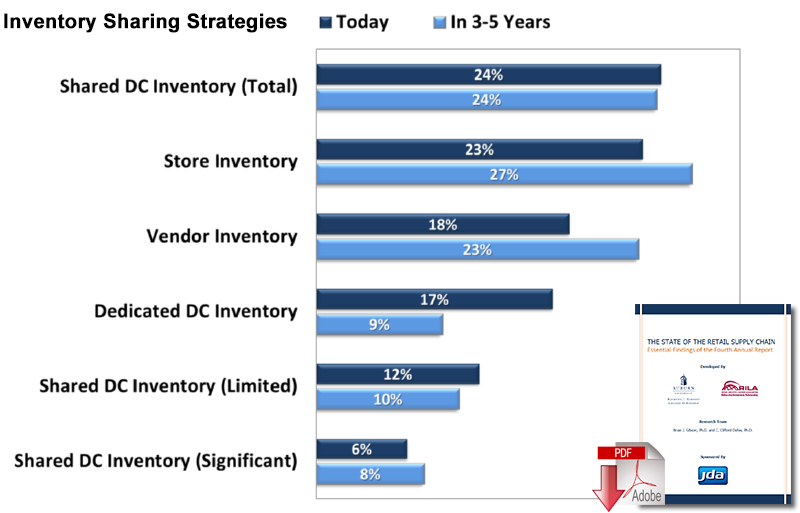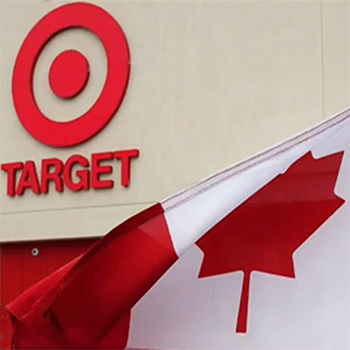Supply Chain Miseries Doom Target in Canada

Target blamed its colossal failure on four key factors: its large-scale opening, supply chain problems, pricing and product assortment issues, and a lack of online presence.
It was less than two years ago that Target opened its first store in Canada, marking the big-box retailer’s first foray outside the United States.
There were plenty of reasons to expect the expansion to be profitable: Wal-Mart had successfully pushed into Canada years earlier and Target followed its rivals’ playbook, buying an established big-box chain and renaming the stores.
The Target brand was already beloved by Canadians who made trips over the border to go to its U.S. stores, a sign that the retailer would have an enthusiastic customer base.
But Thursday, Target conceded that its venture into Canada was a failure. The Minneapolis-based retailer announced that it will shutter all of its 133 Canadian stores after determining it would take at least six years for the business to turn a profit.
Related: Brian Cornell Addresses Questions About Exiting Canada
Experts say Target Canada’s misfortunes – capped with the abrupt decision Thursday to pack up and leave - stem from missteps from within its own operations. In short, Target blew it.
“I think they felt they could just put a Target logo on stores and shoppers would come,” said Nadir Hirji, executive vice president of Jackman Reinvents, a consultancy.
Huge Expectations
“Canadians knew Target and there were pretty huge expectations,” Hirji said. “And the reality was completely different.”
Stylishly renovated stores couldn’t mask a dysfunctional supply chain and in-store merchandise management system that left shelves bare and consumers deeply disappointed.

Insufficient stocking was Target Canada’s single biggest headache. But it wasn’t its only.
“In our opinion, those issues include a badly functioning distribution system, chronic out-of-stocks, mispricing, weak promotional efforts, and a paucity of Canadian products, tactics or management,” CIBC analyst Perry Caicco said in a recent research report.
Higher Prices
Setting prices at noticeably higher levels on certain products and categories compared to what Canadians were accustomed to at U.S. locations was a grave misjudgment. Despite the fact consumers on this side of the border routinely pay more for goods here compared to what U.S. shoppers pay for the same thing, Canadians were repulsed by Target’s pricing.
Combined with supply chain woes, Target quickly exhausted all that goodwill generated with Canadians before it arrived. “When expectations aren’t met it’s very hard to get shoppers to come back,” Hirji said.
Rival Response
Target also ran into a wall of competitors in Canada that had been sharpening their game an anticipation of Target’s arrival in March 2013. “Target’s competitors also did a brilliant defensive job. Walmart, Loblaw, Shoppers Drug Mart, Canadian Tire, and a host of general merchandise retailers focused on improving their store operations, offered better pricing and brought in new ranges,” Stewart Samuel, a retail analyst at supermarket researcher IGD said.
Still, a glowing reputation preceded Target. Convincing shoppers to swap a trip to Walmart or any of the other names above for one to Target shouldn’t have been that difficult, retail industry experts suggest. The pre-launch hype could have translated into sustained sales if Target had executed better.
Out of The Gate
Launching out of the gate with dozens of stores that scaled up quickly to 133 locations in 2014 was a tall order, even for Target, experts say.
Hiring 17,600 staff in less than two years – while simultaneously building out a supply chain from the ground up - ultimately proved far more difficult than the retailer and others realized.
“It started with an overly ambitious market entry plan, from which [Target] never recovered,” Stewart said.
And shoppers voted with their feet.
“The results of Target Canada have been well below expectations right out of the gate, and the business is operating at sales levels about half of what we originally expected,” CIBC’s Caicco said.
Target said Thursday the Canadian chain wouldn’t become profitable until at least 2021. That dire outlook meant the better business decision was for Target to walk as well.
Lessons from the Greatest Supply Chain Disaster in Canadian History
For Canadian retailing and supply chain experts, the larger story is what actually went wrong in Target’s first year here, and what can be learned from it. They say that the retailer’s failed launch in Canada is a textbook case for companies looking to successfully move into any new market.
“Target made all the mistakes in the book; it’s not a surprise that they lost a billion dollars,” says Antony Karabus, CEO of HRC Advisory, a retail consulting firm based in Toronto and Chicago.
The number one lesson from Target’s rocky Canadian start was the impossibly tall order that the company set out for itself by opening 124 stores and three massive distribution centres across the country at roughly the same time, Karabus says.
“They simply tried to do too much at once,” he says, adding that this led to (or was a factor in) many of the giant chain’s other problems. These include the fact that Target didn’t have enough experienced senior Canadian leadership, didn’t pay attention to local pricing, failed to offer a “wow factor” to potential shoppers, didn’t get its supply chain right, was stuck with poor locations and misjudged its competition and customer loyalty in the “value” retail sector. “They really didn’t get it right.”
Marc Wulfraat, president of MWPVL International Inc., a logistics and supply chain consulting firm in Montreal, agrees that opening up more than one hundred stores at once in an entirely new market “is difficult to do without a catastrophe at the finish line.” He suggests that it’s better to use a “phased approach” in such cases.
A gradual launch of the chain would have helped Target avoid one of its largest difficulties, he says, the fact that its massive “computerized-assisted ordering” system appeared to be faulty, leaving store shelves to sit empty while warehouses were “bursting.” Wulfraat suggests that the initial data set-up for the system was likely poor because it was done too quickly and applied to too many items and locations.
“They just completely lost control of inventory,” he says, explaining that if Target had simply gotten one or two test stores up and running first, it may have recognized and been able to troubleshoot and repair its distribution issues. “History will show this as being one of the greatest supply chain disasters in Canadian history.”
Other problems, such as difficulties between Target and its vendors, could have been a result of the company’s American-style management, Wulfraat points out. “You need local feet on the ground if you’re entering a new country. You need people who understand merchandising and local tastes and needs.”
Prices at stores in Canada are higher than those in the U.S. “for lots of reasons,” he says. It’s important to have a system in place to ensure they’re set properly, as well as to address unrealistic price expectations and perceptions among shoppers. There are also many cultural differences between countries that companies have to take into account, such as attitudes toward union involvement that often wreak havoc with employee relations and lead to bad publicity, Wulfraat says.
“You can’t just assume that the new market you’re entering into operates anywhere close to the one you’re used to,” he explains, noting for example that Target’s vendor-partners sent 4th of July merchandise to stores here, not having any idea that it isn’t a Canadian holiday. “That type of ignorance is unforgiveable when you’re entering a new country.”
Karabus says Target should have staged special events, contests and “door-crasher” specials that appealed to its grass-roots audience, to get shoppers excited. “You’ve got to create a compelling reason to bring people to your store and get them to stay.”
Some Retailers Get It Right (some don’t!)

Another U.S. chain entering Canada, Nordstrom, has “built anticipation,” for example celebrating the opening of its first store in Calgary in September at a huge sold-out gala in support of the Alberta Children’s Hospital Foundation and United Way of Calgary. And a U.S. discount shoe retailer, Designer Shoe Warehouse, which opened its first two Canadian big-box stores in August in the Toronto area, promoted the stores through social media and coupons, bringing hundreds of people to wait in line at the openings.
“They did a bunch of things that drove incredible traffic,” Karabus remarks. Target, conversely, undertook glitzy marketing initiatives that didn’t appeal to its segment of the market, he notes, such as rebranding a boutique hotel to its own name during the Toronto International Film Festival.
The fact that Target didn’t understand local pricing is a “typical mistake,” Karabus points out, which especially hurt the chain at the value end of the market. “Canadians are smart, they don’t expect to be gouged,” he says, noting that the chain is now lowering its prices, although it could still have difficulty in the sector, which is dominated by huge names such as Walmart, Costco, Canadian Tire and Giant Tiger.
“You’ve got to be realistic and practical about the size of the market that’s available to you,” he says.
Because Target’s stores are mostly in that Karabus calls “poky” locations vacated by the foundering Zeller’s chain, they don’t reflect the Target’s brand, he says. The company is now starting to open some purpose-built stores that “look like real Targets.”
He notes that many Canadian companies have had success in foreign markets by doing things right. Aldo Shoes of Montreal, with stores in more than 80 countries around the world, has been one of Canada’s most successful exports, he says, finding local partners and excellent locations wherever it goes and getting involved in hip cause-marketing campaigns, which capitalize on its youthful demographic. Lululemon Athletica and The Running Room have also been successful with community events and offerings such as free yoga and running clubs that bring in new customers.
THE STATE OF THE RETAIL SUPPLY CHAIN

Article Topics
Blue Yonder News & Resources
Blue Yonder announces an agreement to acquire One Network Enterprises for $839 million Blue Yonder Acquires One Network Enterprises for $839M Frictionless Podcast: Understanding Your Supply Chain Goals with Ann Marie Jonkman Blue Yonder announces acquisition of flexis AG Supply Chain Management (SCM) applications keep the supply chain humming How Collaborative Efforts Can Enhance Reverse Logistics Netlogistik partners with SVT Robotics to resell SOFTBOT platform More Blue YonderLatest in Supply Chain
Microsoft Unveils New AI Innovations For Warehouses Let’s Spend Five Minutes Talking About ... Malaysia Baltimore Bridge Collapse: Impact on Freight Navigating TIm Cook Says Apple Plans to Increase Investments in Vietnam Amazon Logistics’ Growth Shakes Up Shipping Industry in 2023 Spotlight Startup: Cart.com is Reimagining Logistics Walmart and Swisslog Expand Partnership with New Texas Facility More Supply Chain














